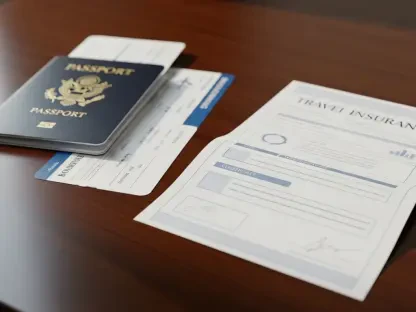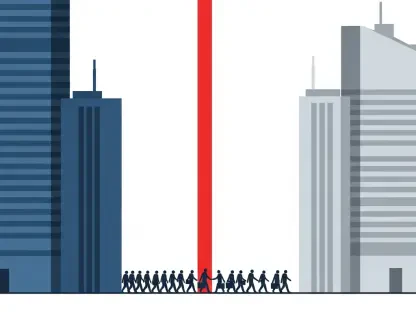At the University of Vermont (UVM), a storm of controversy has erupted as over 2,500 unionized faculty and staff members rally against a health insurance audit conducted by a third-party firm, Willis Towers Watson. On August 14, members of UVM Staff United, United Academics, and United Electrical (UE Local 267) gathered outside the Waterman Building on campus, voicing their outrage over what they perceive as a direct threat to their personal privacy. The audit, designed to verify the eligibility of dependents enrolled in employee health plans, requires the submission of sensitive documents such as birth certificates and marriage licenses. This has sparked widespread unease among the workforce, who fear the potential misuse or exposure of their private information. As tensions mount, the clash between the university’s cost-saving motives and the unions’ demand for data security raises critical questions about the balance between institutional needs and individual rights.
The Core Conflict: Privacy vs. Cost Control
Unions’ Privacy Concerns
The primary grievance fueling the unions’ protest centers on the significant risk to personal privacy posed by the health insurance audit. Employees are deeply troubled by the requirement to share intimate family documents with Willis Towers Watson, a company with a documented history of data security lapses, including a breach in 2023 that exposed names and Social Security numbers. A survey conducted among over 650 unionized workers revealed a pervasive sense of vulnerability, with many expressing distrust in an external entity handling such sensitive information. The unions argue that personal data should remain under the direct control of the university, rather than being outsourced to a third party with no direct accountability to the employees. This concern is not merely theoretical but rooted in real fears of data breaches that could have lasting consequences for individuals and their families, amplifying the urgency of their opposition.
Furthermore, the unions highlight a broader issue of trust—or the lack thereof—in the systems and entities managing employee information. Many workers feel that the university has not adequately addressed the potential for data misuse, nor provided sufficient safeguards against breaches. The unease is compounded by the perception that Willis Towers Watson operates beyond the reach of direct employee recourse, leaving staff with little control over how their information is handled. Union leaders have emphasized that this arrangement undermines the fundamental expectation of confidentiality in employer-employee relationships. The growing anxiety among the workforce underscores a critical disconnect between the university’s intentions and the real-world implications for those affected by the audit, driving the unions to demand a reevaluation of the process to prioritize data protection over procedural efficiency.
UVM’s Justification for the Audit
In stark contrast to the unions’ position, UVM’s administration defends the audit as an essential measure to curb escalating health insurance costs. Chris Lehman, the chief human resources officer, has stressed the university’s “fiduciary duty” to ensure that only eligible dependents are enrolled in medical, dental, and vision plans, thereby safeguarding the financial stability of the benefits system. According to the administration, verifying eligibility helps prevent unnecessary expenditures that could otherwise burden the entire workforce. To address security concerns, UVM’s information security office conducted a comprehensive review of Willis Towers Watson’s systems, ultimately approving their use for the audit. Additionally, the company has advised employees to redact sensitive details like Social Security numbers from documents, a step intended to minimize risk during the verification process.
Despite these assurances, the administration’s rationale has failed to resonate with many union members, who remain skeptical of the measures in place. The university insists that the audit aligns with broader efforts to protect the economic well-being of its community, particularly for employees in more vulnerable financial positions. Lehman has framed employee cooperation as a collective responsibility that strengthens UVM’s ability to sustain its benefits offerings. However, the gap between the administration’s cost-control objectives and the unions’ privacy concerns continues to widen, as the steps taken to secure data are perceived as insufficient by those directly impacted. This disconnect highlights the challenge of aligning fiscal responsibility with the need to maintain trust, leaving the university in a delicate position as it seeks to justify a policy that has sparked such fervent opposition.
Personal Stakes and Emotional Impact
Employees’ Personal Fears
Beyond the overarching privacy concerns, the audit has unearthed deeply personal fears among UVM employees, revealing the human toll of the policy. For some, the risks are not abstract but tied to specific vulnerabilities, such as the potential exposure of a family member’s gender identity through official documents that do not align with their lived identity. As relayed by union representatives, an anonymous employee expressed profound anxiety over the possibility of a data breach in today’s politically charged climate, where such information could lead to discrimination or harm. These individual stories underscore the real-world consequences of the audit, transforming it from a procedural issue into a matter of personal safety and dignity. The fear of sensitive data falling into the wrong hands has galvanized many to join the protest, amplifying the call for the university to reconsider its approach.
Moreover, the personal stakes involved extend to a broader cross-section of the workforce, who worry about the ripple effects of compromised data on their families. The thought of birth certificates or marriage licenses being mishandled evokes a visceral reaction, as these documents represent not just legal records but also deeply private aspects of life. Employees are left questioning whether the university fully grasps the gravity of entrusting such information to an external firm with a questionable track record. This emotional undercurrent fuels the unions’ resolve, as they argue that the audit’s risks disproportionately impact those with unique personal circumstances. The mounting concern over these intimate vulnerabilities adds a poignant dimension to the dispute, emphasizing that the consequences of a breach could extend far beyond mere inconvenience, potentially altering lives in irreversible ways.
Union Leaders’ Strong Reactions
Union leaders have not held back in expressing their visceral opposition to the audit, framing it as a profound betrayal of employee trust. Ellen Kaye, co-president of UVM Staff United, has described the process as “harmful and chilling,” drawing a stark comparison to federal government practices under initiatives like the Department of Government Efficiency (DOGE), which she argues prioritize efficiency over workers’ rights. This rhetoric reflects a broader narrative of institutional overreach, where financial imperatives are seen as trampling on the well-being of the workforce. Kaye’s strong language resonates with many union members, who view the audit as emblematic of a troubling trend in which employee security is sacrificed for the sake of budgetary goals, intensifying the emotional weight of their protest.
Adding to this sentiment, other union representatives have voiced frustration over the perceived disregard for employee input in the audit’s implementation. Claire Whitehouse, also co-president of UVM Staff United, has articulated the collective unease about sharing highly personal information with a company that lacks direct accountability to the staff. This frustration is compounded by the university’s failure to provide evidence of fraud or misuse that would necessitate such an invasive measure. The emotional intensity of these reactions underscores a deep-seated distrust not only in the third-party auditor but also in the administration’s priorities. Union leaders’ outspoken criticism serves as a rallying cry for the workforce, channeling individual anxieties into a unified demand for respect and protection, while highlighting the broader implications of such policies on workplace morale and institutional relationships.
Union Demands and Next Steps
Call for Bargaining and Dialogue
In response to the audit, the unions are adamant about securing a role in shaping its implementation, asserting that its impact on employees makes it a mandatory subject of bargaining. They have formally requested a meeting with UVM’s new president, Marlene Tromp, to discuss their concerns and negotiate terms that better protect privacy. This push for dialogue reflects a desire to bridge the gap between the administration’s objectives and the workforce’s needs, emphasizing that collaboration could lead to a more balanced approach. Union leaders argue that direct engagement with university leadership is essential to address the unease permeating the campus and to ensure that employee voices are not sidelined in decisions affecting their personal data. The call for bargaining represents a constructive step toward resolution, aiming to transform protest into productive conversation.
Additionally, the unions’ insistence on dialogue underscores their recognition of the university’s authority to review health insurance options, while challenging the manner in which such reviews are conducted. They seek assurances that future policies will prioritize transparency and employee consent, rather than unilateral action that leaves staff feeling vulnerable. The request for a meeting with President Tromp is not just a procedural demand but a plea for mutual respect, as unions strive to establish a precedent for inclusive decision-making. Should this opportunity for discussion materialize, it could pave the way for compromise, potentially mitigating the audit’s most contentious aspects. However, the unions remain firm that without such engagement, trust between the administration and the workforce will continue to erode, making resolution increasingly elusive in this deeply divisive issue.
Threat of Escalation
If their calls for dialogue go unanswered, the unions have signaled their readiness to intensify their efforts to pressure the administration. Plans are in place to potentially bring their message to the incoming class during convocation, a move that would expand public awareness of the issue and apply greater scrutiny to UVM’s policies. By engaging with students and the wider campus community, the unions aim to highlight the broader implications of the audit, framing it as a matter of ethical concern that transcends the employee base. This strategy reflects a calculated effort to shift the narrative from an internal dispute to a public issue, leveraging visibility to compel university leadership to address their grievances. The threat of escalation underscores the unions’ determination to protect privacy at all costs, even if it means taking their fight to a larger stage.
Moreover, this potential escalation serves as a reminder of the stakes involved and the unions’ unwillingness to accept the status quo. Engaging the incoming class could also resonate with younger generations who are often more attuned to issues of data privacy in the digital age, potentially garnering wider support for the cause. Union leaders like Ellen Kaye have made it clear that they are prepared to explore all avenues to ensure their concerns are heard, viewing public outreach as a necessary tactic if direct negotiations fail. This readiness to amplify their protest signals a critical juncture in the dispute, where the outcome could set a precedent for how similar conflicts are handled at UVM and beyond. As the situation unfolds, the unions’ next steps will likely depend on the administration’s response, with the possibility of heightened action looming as a powerful motivator for change.
Reflecting on a Path Forward
Looking back, the protest at UVM illuminated a profound rift between institutional priorities and employee protections, with privacy emerging as the central battleground. The unions’ resolute stance against the audit captured widespread fears about data security, while personal testimonies revealed the deeply human consequences of such policies. Although UVM defended the audit as a fiscal necessity, their assurances fell short of easing the concerns of a workforce grappling with both practical and emotional risks. As the unions pressed for dialogue with President Tromp, their readiness to escalate by involving the broader campus community demonstrated a commitment to safeguarding their rights. Moving forward, a viable path could involve establishing joint committees to oversee data-handling processes, ensuring transparency and accountability. Additionally, exploring alternative verification methods that minimize third-party involvement might rebuild trust. This situation at UVM serves as a reminder that balancing cost control with personal security requires ongoing collaboration, offering a critical lesson for other institutions navigating similar challenges.









